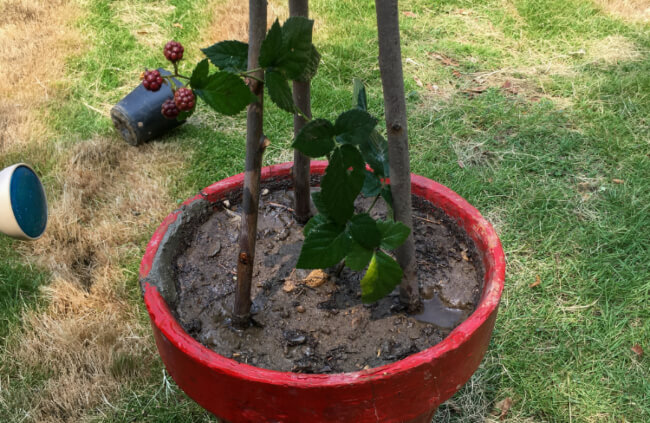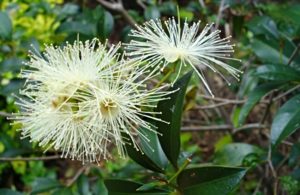Once established, blackberry plants can grow like weeds, so care and extra steps need to be thought about before growing to make sure your blackberries don't become weeds elsewhere.
The best varieties require a bit of planning and preparation to get started, but avid gardeners will find the effort worthwhile at harvest time. Nothing quite matches the sweet, juicy taste of fresh blackberries.
More...
How to Grow Blackberry Plants
Blackberries are best grown in areas with cool or cold winters. Planting them from seed is possible, but for a quicker harvest, most people plant bare-root plants. In the coldest areas, upright, stiff-caned varieties can be grown. In areas with warmer winters, trailing types do best.
Follow these simple tips to grow blackberries successfully.

Soil Testing and Preparation
All blackberries require a deep, well-drained soil, full sun and ample water throughout the growing season. Avoid sites where the soil remains wet late into the fall. Compost should be worked deeply into the soil before planting, as the plants grow best in a soil rich with organic matter.
Several days before planting, a balanced fertiliser should be worked into the soil as well. Blackberries prefer a neutral or slightly acidic soil, with a pH of 7.0 or below. A soil’s pH can be easily determined with a soil testing kit, available at most garden centres and also online.
If the soil is alkaline, above 7.0 on the pH scale, common sulphur, ferrous sulphate or aluminium sulphate can be used to raise the acidity, although regularly-applied organic soil amendments, such as manure and compost, will lower the pH over time. If the soil is too acidic, ground limestone will raise the pH.
Plant blackberry plants at the first sign of spring, when the soil has warmed and temperatures are mild. Since the plants grow from the base of the crown, some type of physical support is needed to keep them from sprawling. Trailing types are best grown on trellis.
Upright varieties benefit from support as well. Set plants 1 to 2 metres apart with a 1 ½ metre trellis or post next to each plant. For upright varieties, run a wire along the top of the posts and train the branches along the wire. Bare-root plants will take 2 to 4 weeks for the roots to become established.

Caring of Blackberry Plants
Pruning Blackberries
While the roots of blackberries are perennial, the canes are biennial, appearing and growing one year, flowering and bearing fruit the next. Only 1-year-old canes should be trained on the trellis or wire. All the canes that fruited the previous season should be pruned back to the crown of the plant.
Prune canes of the current season growing on the trellis to 1 to 2 ½ metres. Thin out all but 12 to 16 sturdy canes. These canes will produce side branches, called laterals, during the remainder of the growing season.
Cut the side branches back to 30 centimetres, or about 12 buds, in the early spring. With new spring growth, small branches will grow from the side branches. These will be the branches that bear fruit.
Mulching
Covering the soil around the crown of the plants with a rich, organic mulch will help keep the plants free of diseases and pests, as well as help control weeds. Blackberries can quickly become invasive if left unattended. Remove suckers whenever they appear.
Fertilising Blackberry Plants
Plants should be fertilised with a commercial fertiliser several times each year. In the coldest areas, plants should be fed when the plant blossoms. In warmer regions, the plants will do better with periodic feeding.
Feed once when new growth begins, again in mid-spring and a third time in the middle of the summer.
Common Blackberry Plant Pests
Red-berry mites, spider mites and whiteflies are sometimes a problem with blackberry plants. To control mites, apply a dormant spray containing lime sulphur in winter and again as buds are about to bloom.
Plants started from bare root can be expected to produce fruit the third year after planting. While the canes bloom biennially, by properly pruning older canes each season, blackberry plants will produce a bountiful harvest each year.
Published on June 5, 2023 by AGT
Last Updated on January 24, 2024




